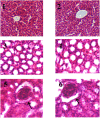Synthesis of novel coumarin nucleus-based DPA drug-like molecular entity: In vitro DNA/Cu(II) binding, DNA cleavage and pro-oxidant mechanism for anticancer action
- PMID: 28763458
- PMCID: PMC5538679
- DOI: 10.1371/journal.pone.0181783
Synthesis of novel coumarin nucleus-based DPA drug-like molecular entity: In vitro DNA/Cu(II) binding, DNA cleavage and pro-oxidant mechanism for anticancer action
Abstract
Despite substantial research on cancer therapeutics, systemic toxicity and drug-resistance limits the clinical application of many drugs like cisplatin. Therefore, new chemotherapeutic strategies against different malignancies are needed. Targeted cancer therapy is a new paradigm for cancer therapeutics which targets pathways or chemical entities specific to cancer cells than normal ones. Unlike normal cells, cancer cells contain elevated copper which plays an integral role in angiogenesis. Copper is an important metal ion associated with chromatin DNA, particularly with guanine. Thus, targeting copper via copper-specific chelators in cancer cells can serve as an effective anticancer strategy. New pharmacophore di(2-picolyl)amine (DPA)-3(bromoacetyl) coumarin (ligand-L) was synthesized and characterized by IR, ESI-MS, 1H- and 13C-NMR. Binding ability of ligand-L to DNA/Cu(II) was evaluated using a plethora of biophysical techniques which revealed ligand-L-DNA and ligand-L-Cu(II) interaction. Competitive displacement assay and docking confirmed non-intercalative binding mode of ligand-L with ctDNA. Cyclic voltammetry confirmed ligand-L causes quasi reversible Cu(II)/Cu(I) conversion. Further, acute toxicity studies revealed no toxic effects of ligand-L on mice. To evaluate the chemotherapeutic potential and anticancer mechanism of ligand-L, DNA damage via pBR322 cleavage assay and reactive oxygen species (ROS) generation were studied. Results demonstrate that ligand-L causes DNA cleavage involving ROS generation in the presence of Cu(II). In conclusion, ligand-L causes redox cycling of Cu(II) to generate ROS which leads to oxidative DNA damage and pro-oxidant cancer cell death. These findings will establish ligand-L as a lead molecule to synthesize new molecules with better copper chelating and pro-oxidant properties against different malignancies.
Conflict of interest statement
Figures















Similar articles
-
Copper-redox cycling by coumarin-di(2-picolyl)amine hybrid molecule leads to ROS-mediated DNA damage and apoptosis: A mechanism for cancer chemoprevention.Chem Biol Interact. 2018 Jun 25;290:64-76. doi: 10.1016/j.cbi.2018.05.010. Epub 2018 May 24. Chem Biol Interact. 2018. PMID: 29803612
-
Interaction of C20-substituted derivative of pregnenolone acetate with copper (II) leads to ROS generation, DNA cleavage and apoptosis in cervical cancer cells: Therapeutic potential of copper chelation for cancer treatment.Bioorg Chem. 2019 Jun;87:276-290. doi: 10.1016/j.bioorg.2019.03.031. Epub 2019 Mar 19. Bioorg Chem. 2019. PMID: 30908970
-
Redox cycling of copper by coumarin-di(2-picolyl)amine hybrid molecule leads to ROS-mediated modulation of redox scavengers, DNA damage and cell death in diethylnitrosamine induced hepatocellular carcinoma.Bioorg Chem. 2020 Jun;99:103818. doi: 10.1016/j.bioorg.2020.103818. Epub 2020 Apr 3. Bioorg Chem. 2020. PMID: 32276135
-
Progress of Metal-Based Anticancer Chemotherapeutic Agents in Last two Decades and their Comprehensive Biological (DNA/RNA Binding, Cleavage and Cytotoxicity Activity) Studies.Chem Rec. 2023 Mar;23(3):e202200247. doi: 10.1002/tcr.202200247. Epub 2023 Feb 10. Chem Rec. 2023. PMID: 36762719 Review.
-
Copper(II) Phenanthroline-Based Complexes as Potential AntiCancer Drugs: A Walkthrough on the Mechanisms of Action.Molecules. 2021 Dec 22;27(1):49. doi: 10.3390/molecules27010049. Molecules. 2021. PMID: 35011273 Free PMC article. Review.
Cited by
-
A Supramolecular Interaction of a Ruthenium Complex With Calf-Thymus DNA: A Ligand Binding Approach by NMR Spectroscopy.Front Chem. 2019 Nov 8;7:762. doi: 10.3389/fchem.2019.00762. eCollection 2019. Front Chem. 2019. PMID: 31781544 Free PMC article.
-
N-alkyl triphenylvinylpyridinium conjugated dihydroartemisinin perturbs mitochondrial functions resulting in enhanced cancer versus normal cell toxicity.Free Radic Biol Med. 2021 Mar;165:421-434. doi: 10.1016/j.freeradbiomed.2021.01.050. Epub 2021 Feb 6. Free Radic Biol Med. 2021. PMID: 33561488 Free PMC article.
-
3-(Bromoacetyl)coumarins: unraveling their synthesis, chemistry, and applications.RSC Adv. 2021 Nov 29;11(61):38391-38433. doi: 10.1039/d1ra05574g. eCollection 2021 Nov 29. RSC Adv. 2021. PMID: 35493203 Free PMC article. Review.
-
One-pot synthesis of cyclic-aminotropiminium carboxylate derivatives with DNA binding and anticancer properties.Commun Chem. 2022 Dec 27;5(1):179. doi: 10.1038/s42004-022-00798-x. Commun Chem. 2022. PMID: 36697960 Free PMC article.
-
Discovery and anticancer evaluation of a formononetin derivative against gastric cancer SGC7901 cells.Invest New Drugs. 2019 Dec;37(6):1300-1308. doi: 10.1007/s10637-019-00767-7. Epub 2019 Mar 30. Invest New Drugs. 2019. PMID: 30929157
References
-
- Hurley LH. DNA and its associated processes as targets for cancer therapy. Nat Rev Cancer. 2002; 2:188–200. doi: 10.1038/nrc749 - DOI - PubMed
-
- Burger RM. Cleavage of nucleic acids by bleomycin. Chem Rev. 1998; 98:1153–1170. - PubMed
-
- Boerner LJ, Zaleski JM. Metal complex-DNA interactions: from transcription inhibition to photoactivated cleavage. Curr Opin Chem Biol. 2005; 9:135–144. doi: 10.1016/j.cbpa.2005.02.010 - DOI - PubMed
-
- Zhang CX, Lippard SJ. New metal complexes as potential therapeutics. Curr Opin Chem Biol. 2003; 7:481–489. - PubMed
-
- Boulikas T, Vougiouka M. Cisplatin and platinum drugs at the molecular level. (Review). Oncol Rep. 2003; 10:1663–1682. - PubMed
MeSH terms
Substances
LinkOut - more resources
Full Text Sources
Other Literature Sources

